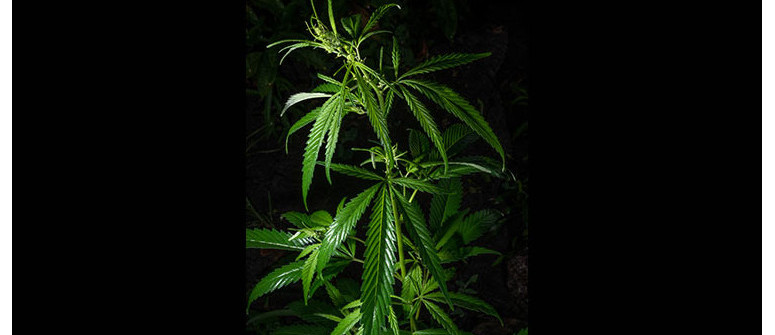How to force outdoor plants into flowering

In some regions, forcing marijuana plants into flowering can make the difference between a successful or failed harvest. Read more at CannaConnection.
For different reasons, the forced flowering technique can be useful for cannabis growers living either in cool, warm, or light-polluted urban areas. Forcing the plant into the flowering stage can make the difference between a successful or failed harvest. Plus, it usually provides increased yields.
With the exception of autoflowering strains, cannabis plants will not start flowering until August/September, when the sunlight period naturally starts to reduce. In the cool climates of central and northern European regions, the average weather quickly becomes cold and damp by late September to mid-October.
With the exception of a few Mediterranean seaside regions, autumn temperatures and humidity in most part of Europe can seriously reduce the harvest quality and quantity of most of the cannabis strains.
In worst cases, the long-awaited buds might become completely spoiled. That’s why in many regions of the world smart growers start forcing their plants flowering in mid-June or early July.
ENSURING GOOD HARVESTS IN COLD CLIMATES
The key for rich yields in cool regions is ensuring, that plants begin to flower soon enough to complete their lifecycle before the winter. Aside from temperatures, in northern regions sunlight becomes weak and with a limited duration at the end of autumn, negatively affecting both outdoor or greenhouse crops.
In order to force the plant to anticipate its natural flowering start, the grower must artificially and prematurely reduce the hours of daylight provided. The plants’ hormones will react to the short days, stopping their growth stage and triggering an anticipated flowering, thus being ripe before a cold fall knocks on the door.
A forced flowering doesn’t just prevent cold weather to reduce or spoil a potentially good harvest. In cool climates, the difference in temperature and light intensity between late summer, when cannabis plants naturally begin to flower, and early summer is very significant. Anticipating the blooming phase lets flowers get ripe under a warmer sun for a longer time, resulting in bigger, denser, and stickier buds.
Together with the forced flowering technique, starting seedlings indoors is a good practice under various climate conditions, and it becomes mandatory in regions with cold springtime temperatures. The grower can start plants in February or March, according to local climate, and tactically force their flowering in order to have them fully harvested by June.
PERPETUAL HARVEST IN MILD CLIMATES
Forced flowering can also be useful to produce multiple crops per year in mild climates, and live happily in a “perpetual harvest” regime where two or more crops per year can be achieved by just depriving plants of light. The first yearly harvest comes by June, with seedlings started in February or March.
The successive harvests come from late summer to late autumn by inducing a few plants to flower every 7-10 days. In some temperate Mediterranean regions the climate allows for two or three harvests per year, even if maybe with smaller plants.
HOW TO BUILD A LIGHT-DEPRIVATION SYSTEM
A forced flowering system needs a cover for the cultivation made from a material, that cannot be penetrated by light. The tricky part is allowing the maximum possible amount of fresh air to flow in and out the growing area. A few plants can be covered with any kind of opaque and breathable material nailed on a lightweight wooden frame. This “cap” must be placed over the plants every evening at the same hour to make sure they don’t get more than 12 hours of light for each flowering day.
Cardboard boxes, blackout photography curtains or camping tents are good materials for building a forced flowering system. A well engineered blackout cap can also be hung to cables and pulleys to make the obscuring routine easier. This is particularly useful for medium and large grows, where the obscuring system could also be automated.
The same kind of sheds and blackout curtains can be used by indoor, balcony, outdoor, or greenhouse growers to impose a 12 hours light cycle on their plants. In many cases, outdoor growers would prefer to cultivate in portable containers, that can be easily moved into an obscured place. One large cap or shed, which contains the entire crop is probably more convenient than many smaller ones.
Capping plants reduces the airflow around them, and any cover with black material generates high temperatures during the daytime, when hit by sunrays. A single large shed allows for better air circulation and it makes the placement of fans, air extractors or dehumidifiers much easier. A good airflow is crucial in any season or growth phase, and in some cases the use of fans at night may be a forced choice for forcing flowering. In any case, the blackout material should be as breathable as possible.
HANDLING NATURAL LIGHT
The grower must be careful not to vary the forced lighting period, not even for a couple of days, as it would freak out the plants, making them revert back to vegetative phase, or become hermaphrodite as a defensive action from environmental stress.
For the same reason, cultivations on balconies subjected to light pollution in the nighttime hours should be covered, because the lack of total darkness caused by streetlights can prevent or alter normal flowering. Despite that, another good moment to cover flowering plants outdoors is when they need protection against a hailstorm, or unexpectedly cold, rainy, or windy conditions.
Even if natural dawn happens at 05:00, it’s not always advisable to start the forced 12 hours light period so early. In warm regions it is better not to uncap plants at dawn because recapping them at 17:00 prevents them from getting the good warm late afternoon sunlight, yet they will be exposed to high temperatures under a black curtain hit by the sun. Capping times may need to be adjusted as the season progresses, according to local climate.




